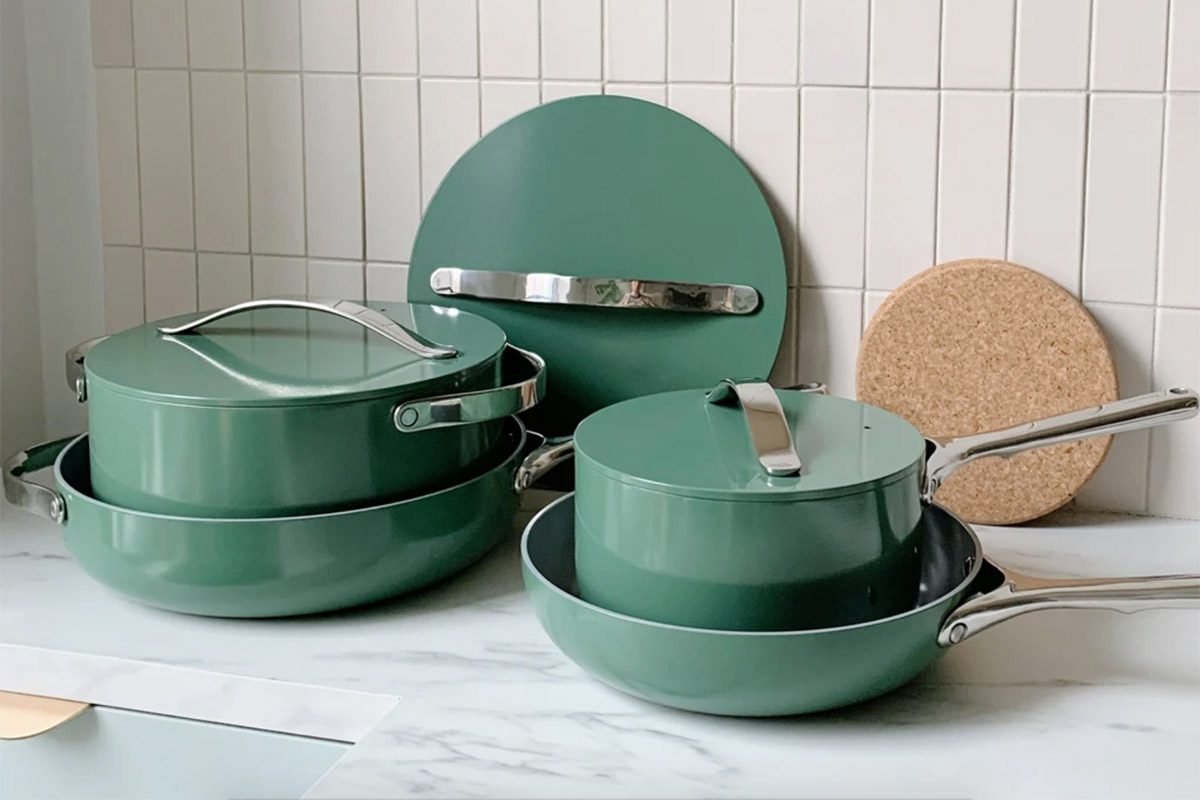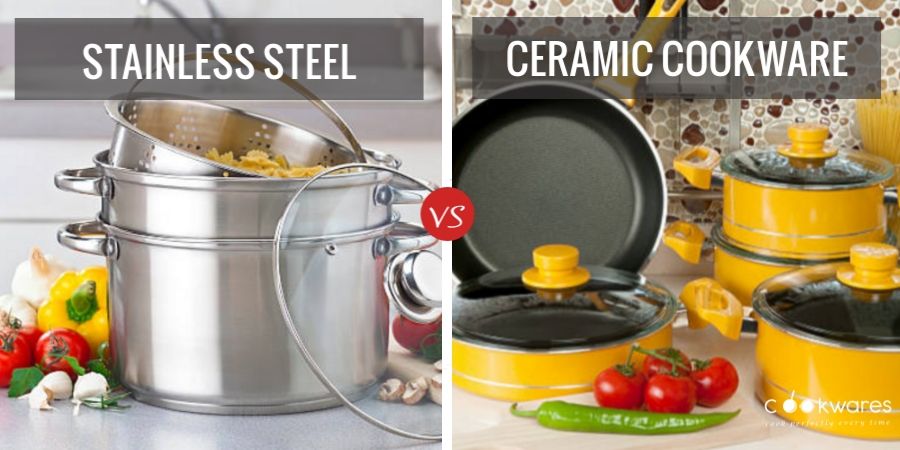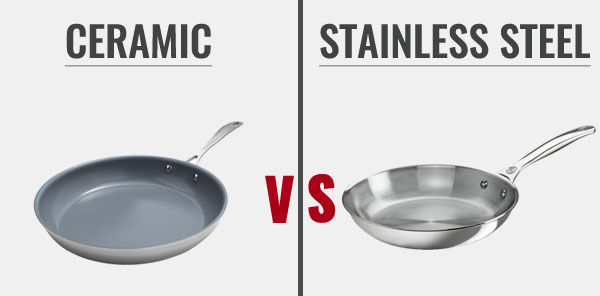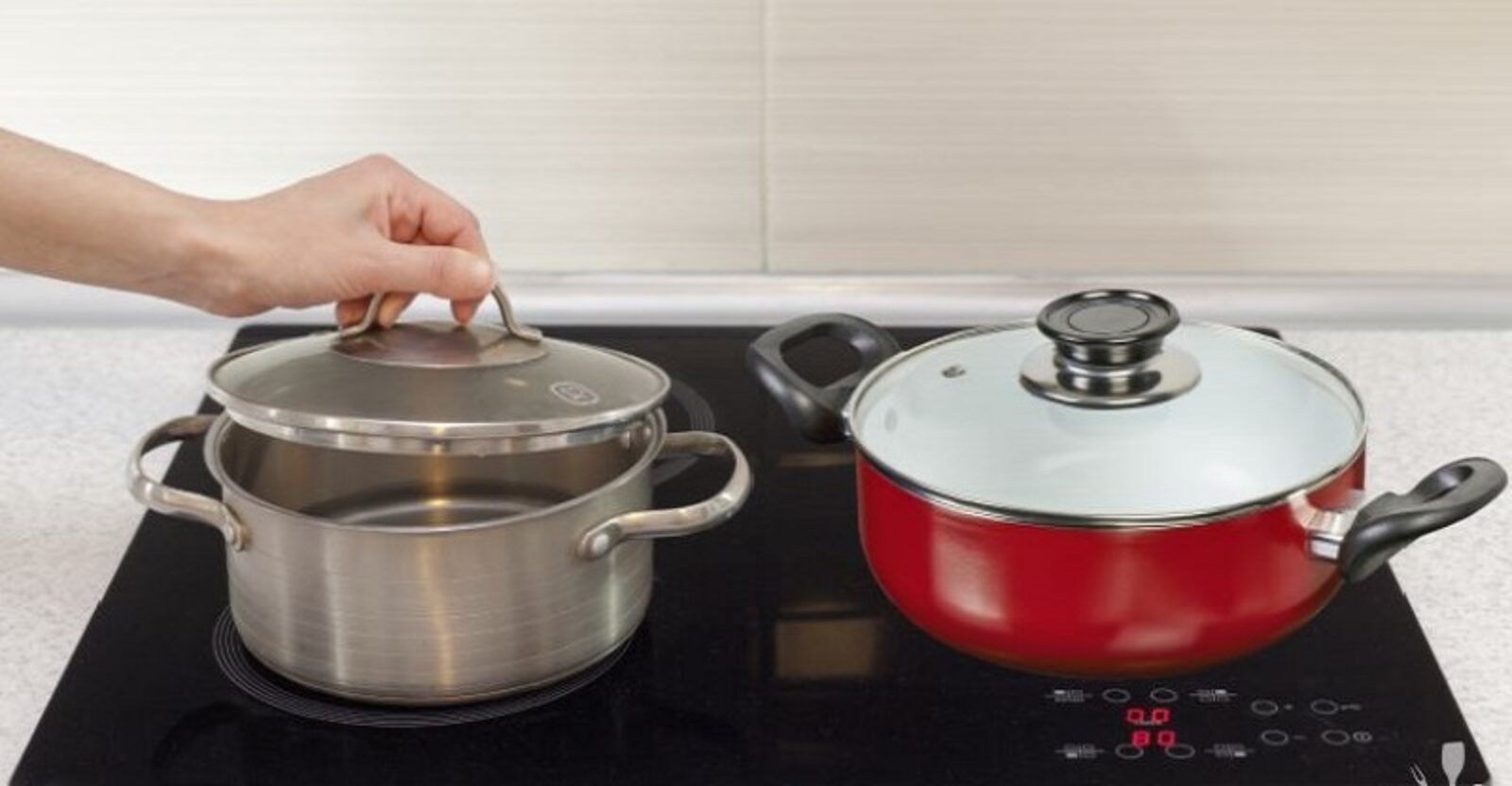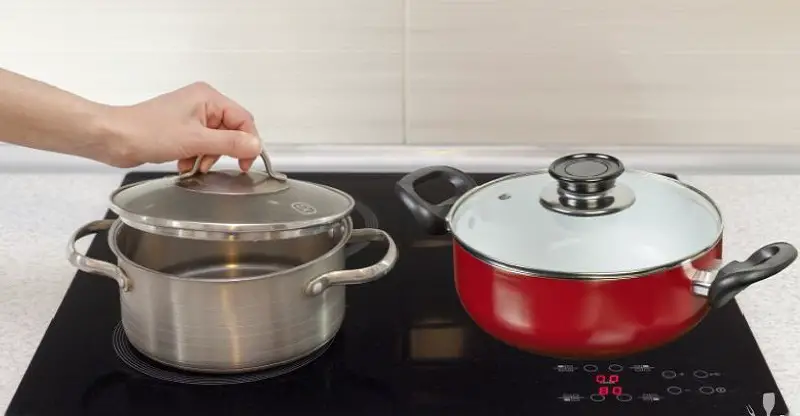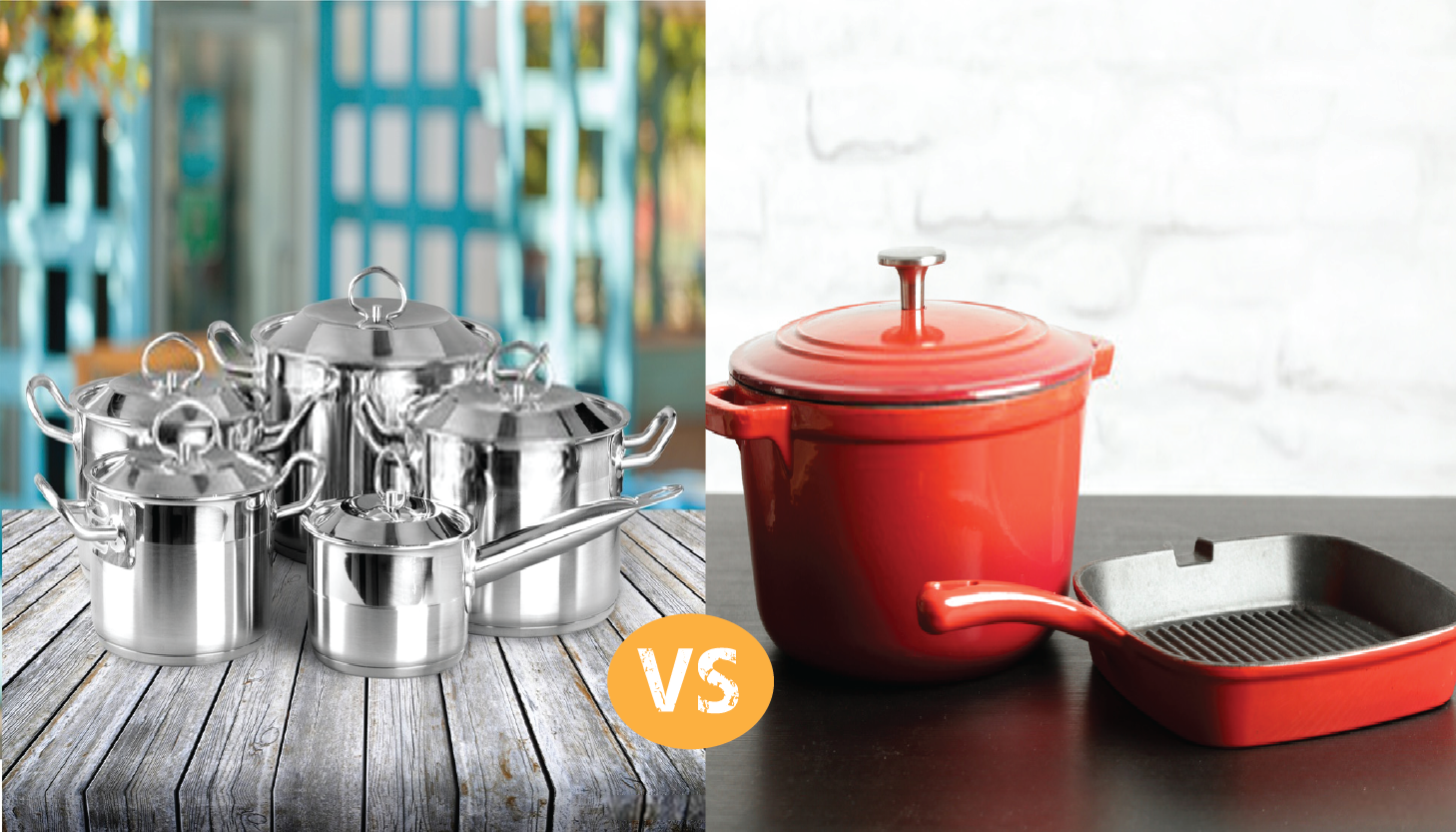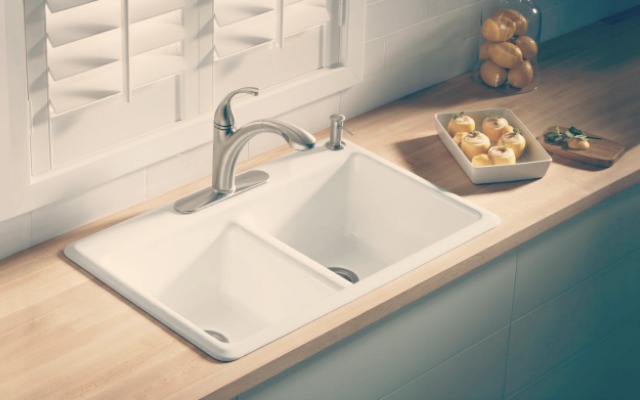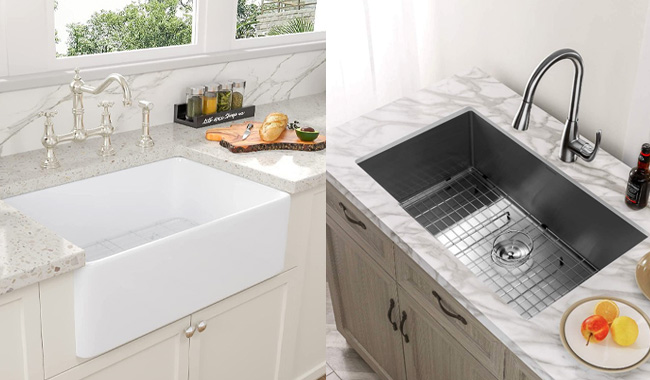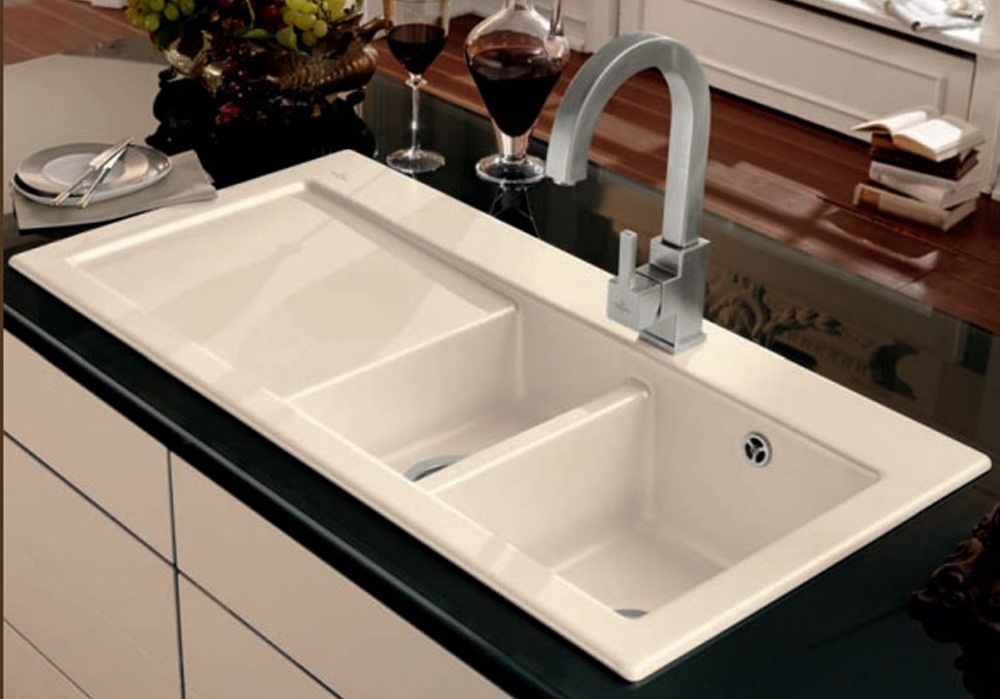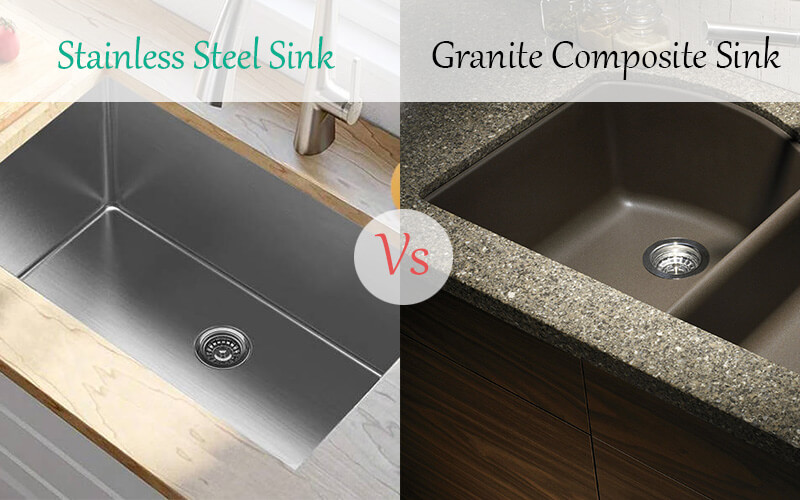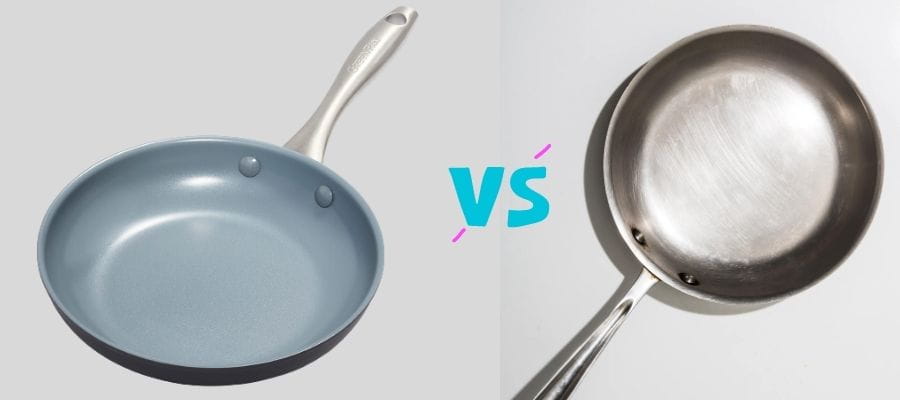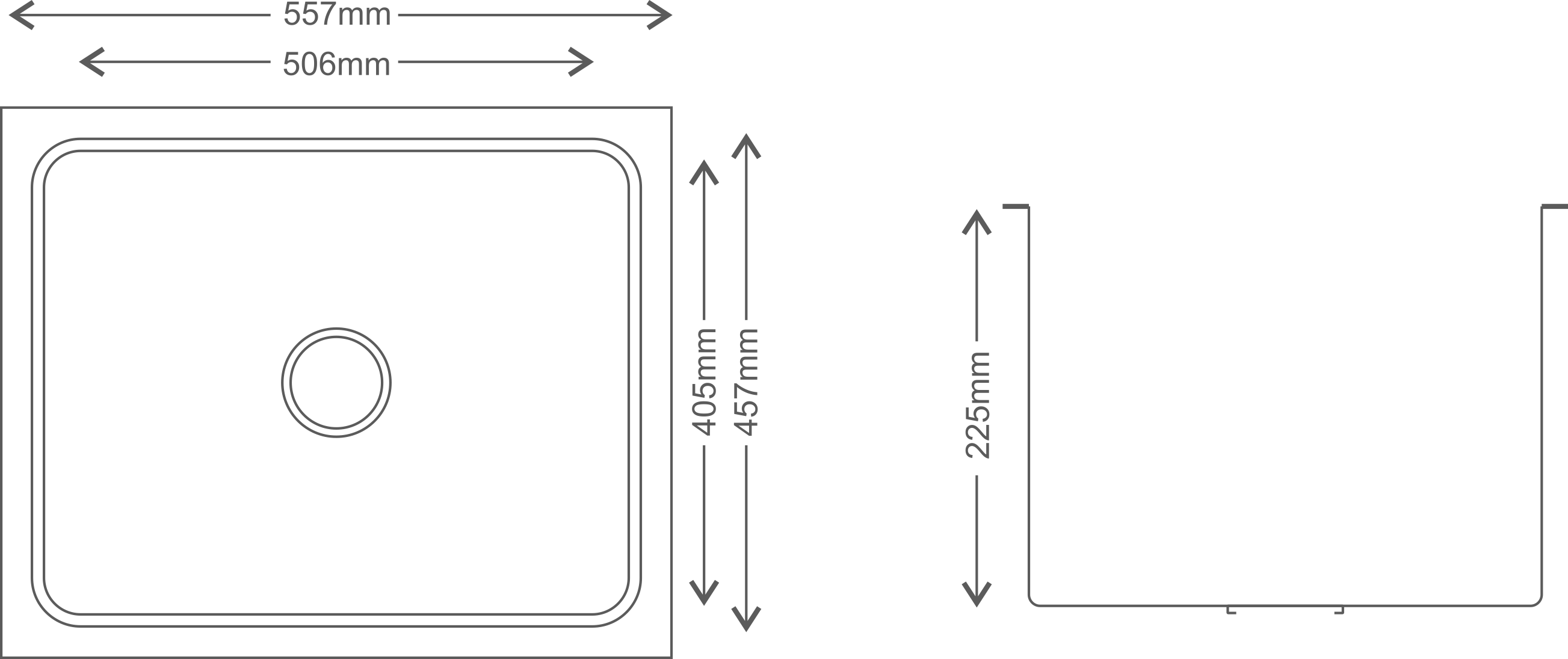When it comes to durability, both ceramic and stainless steel kitchen sinks have their own strengths and weaknesses. Ceramic sinks, also known as porcelain sinks, are made from a combination of clay, minerals, and water. They are then fired at high temperatures to create a hard and durable surface. On the other hand, stainless steel sinks are made from a mixture of steel, chromium, and nickel, which makes them strong and resistant to rust and corrosion. However, when it comes to withstanding impact, ceramic sinks may be more prone to chipping or cracking compared to stainless steel sinks. This is because ceramic is a brittle material, whereas stainless steel has a higher tensile strength. Therefore, if you have a busy kitchen or tend to be rough with your sink, a stainless steel sink may be a more durable option.1. Durability of Ceramic vs Stainless Steel Kitchen Sinks
When it comes to maintenance, there is a clear winner between ceramic and stainless steel sinks. Ceramic sinks are known for their smooth and non-porous surface, making them easy to clean and maintain. They are resistant to stains and scratches, and can easily be wiped clean with a damp cloth and mild soap. On the other hand, stainless steel sinks can be prone to water spots and fingerprints, which can make them look dirty and require frequent wiping. However, with the right cleaning products and techniques, stainless steel sinks can also be kept looking shiny and new. Additionally, stainless steel sinks are more resistant to harsh cleaning products and can withstand high temperatures, making them easier to maintain in the long run.2. Maintenance Comparison: Ceramic vs Stainless Steel Kitchen Sinks
The cost of a kitchen sink can vary greatly depending on the material, size, and brand. Generally, ceramic sinks tend to be more expensive than stainless steel sinks. This is because the production process for ceramic sinks is more complex and involves firing the material at high temperatures, which can increase the cost of production. Stainless steel sinks, on the other hand, are more affordable and readily available in a variety of price ranges. This makes them a popular choice for budget-conscious homeowners or those looking for a more cost-effective option for their kitchen renovation.3. Cost Comparison: Ceramic vs Stainless Steel Kitchen Sinks
When it comes to design and aesthetics, ceramic sinks may have the upper hand. They are available in a wide range of colors, shapes, and designs, allowing for more customization and adding a unique touch to your kitchen. Ceramic sinks can also be molded into different shapes and sizes, making them a popular choice for farmhouse or apron sinks. Stainless steel sinks, on the other hand, have a more modern and sleek look that can easily blend in with any kitchen style. They are also available in a variety of finishes, such as brushed or polished, to suit personal preferences. However, they may not offer as many design options as ceramic sinks.4. Design Options for Ceramic vs Stainless Steel Kitchen Sinks
Ceramic sinks are known for their heat resistance, making them a popular choice for kitchens where hot pots and pans are frequently used. They can withstand high temperatures without getting damaged or discolored. However, caution should still be taken to avoid thermal shock, which can cause the sink to crack. Stainless steel sinks also have a good level of heat resistance. However, they may not be as resistant to heat as ceramic sinks, and prolonged exposure to high temperatures can cause discoloration or even warping in extreme cases.5. Heat Resistance: Ceramic vs Stainless Steel Kitchen Sinks
Ceramic sinks are highly resistant to stains, thanks to their non-porous surface. This makes them a great choice for kitchens where there is a lot of food prep and potential for spills. However, some types of food or colored liquids may cause staining if left on the surface for too long. Stainless steel sinks are also resistant to stains, but they may require more frequent cleaning to maintain their shiny appearance. Certain foods or liquids can cause discoloration if not cleaned promptly. Additionally, scratches or abrasive cleaning products can also cause staining on stainless steel sinks.6. Stain Resistance: Ceramic vs Stainless Steel Kitchen Sinks
Ceramic sinks are known for their quietness, as they absorb sounds and vibrations better than stainless steel sinks. This can be a significant advantage for those with open-concept kitchens or for those who prefer a quieter kitchen environment. Stainless steel sinks, on the other hand, can be noisier due to their thinner material and metal composition. However, some manufacturers offer sound-absorbing pads or coatings to reduce noise levels.7. Noise Levels: Ceramic vs Stainless Steel Kitchen Sinks
The installation process for both ceramic and stainless steel sinks is similar and involves cutting a hole in the countertop and securing the sink in place. However, due to their weight and fragility, ceramic sinks may require more specialized installation techniques, such as additional support or reinforcement. Stainless steel sinks are relatively lightweight and can be installed by most homeowners without the need for professional help. This can save time and money during a kitchen renovation project.8. Installation Process: Ceramic vs Stainless Steel Kitchen Sinks
When it comes to eco-friendliness, ceramic sinks may have a slight advantage. They are made from natural materials and are biodegradable, making them a more environmentally friendly option. However, the production process for ceramic sinks can be energy-intensive, which may offset their eco-friendliness. Stainless steel sinks are made from recycled materials and can also be recycled at the end of their lifespan. They also require less energy to produce compared to ceramic sinks, making them a more sustainable option in the long run.9. Eco-Friendliness: Ceramic vs Stainless Steel Kitchen Sinks
Both ceramic and stainless steel sinks can last for many years with proper care and maintenance. However, ceramic sinks may be more susceptible to damage or wear and tear over time. They can chip or crack if heavy objects are dropped on them, and the glaze can wear off with frequent use. Stainless steel sinks are highly durable and can withstand heavy use without showing signs of wear. They are also resistant to corrosion and rust, making them a long-lasting option for any kitchen. In conclusion, both ceramic and stainless steel kitchen sinks have their own unique pros and cons. Ultimately, the best choice will depend on your personal preferences, budget, and the specific needs of your kitchen. With proper care and maintenance, both types of sinks can add functionality and style to your kitchen for many years to come.10. Longevity of Ceramic vs Stainless Steel Kitchen Sinks
Why Ceramic is the Ideal Choice for Your Kitchen Sink
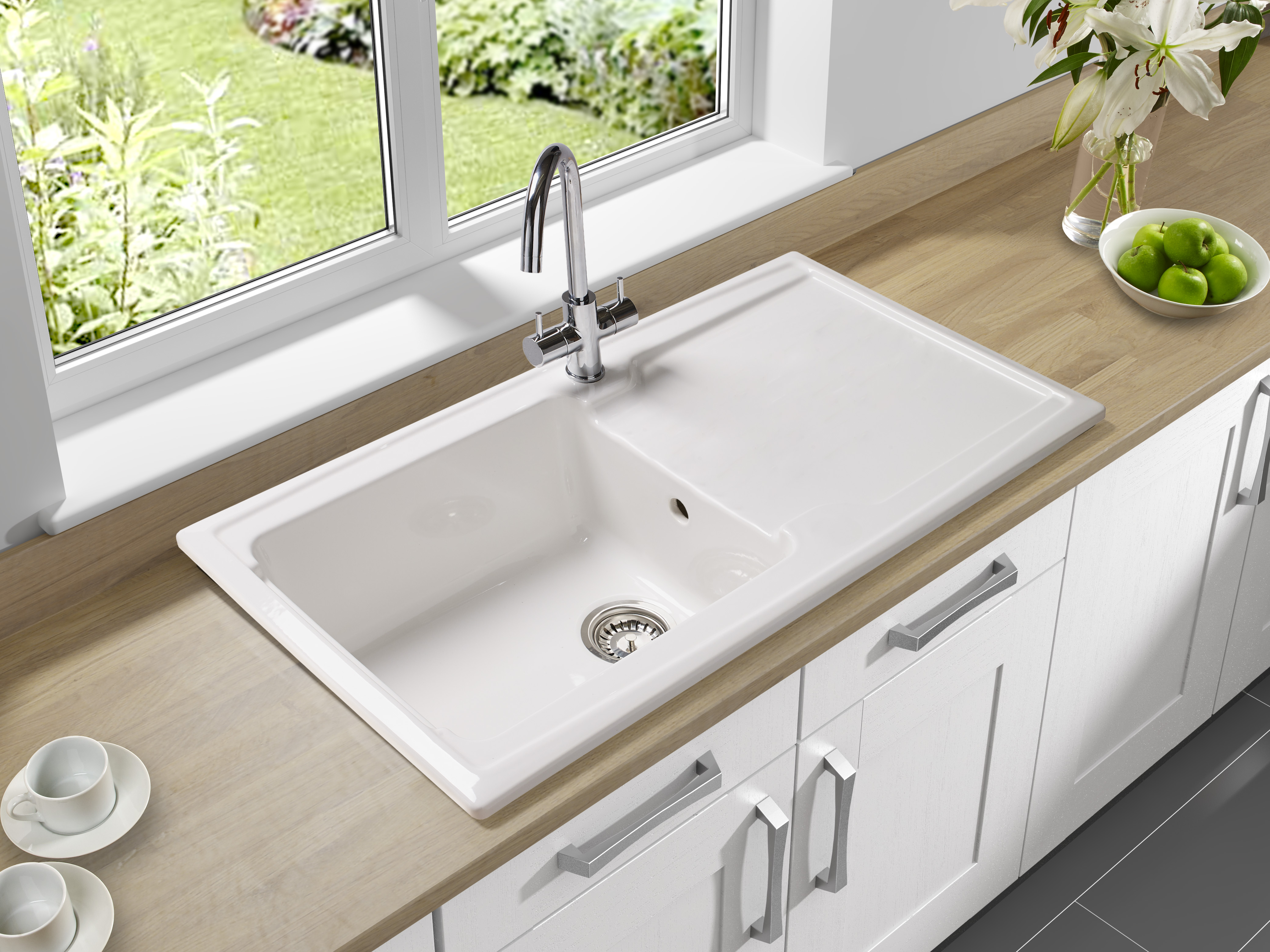
Durability and Longevity
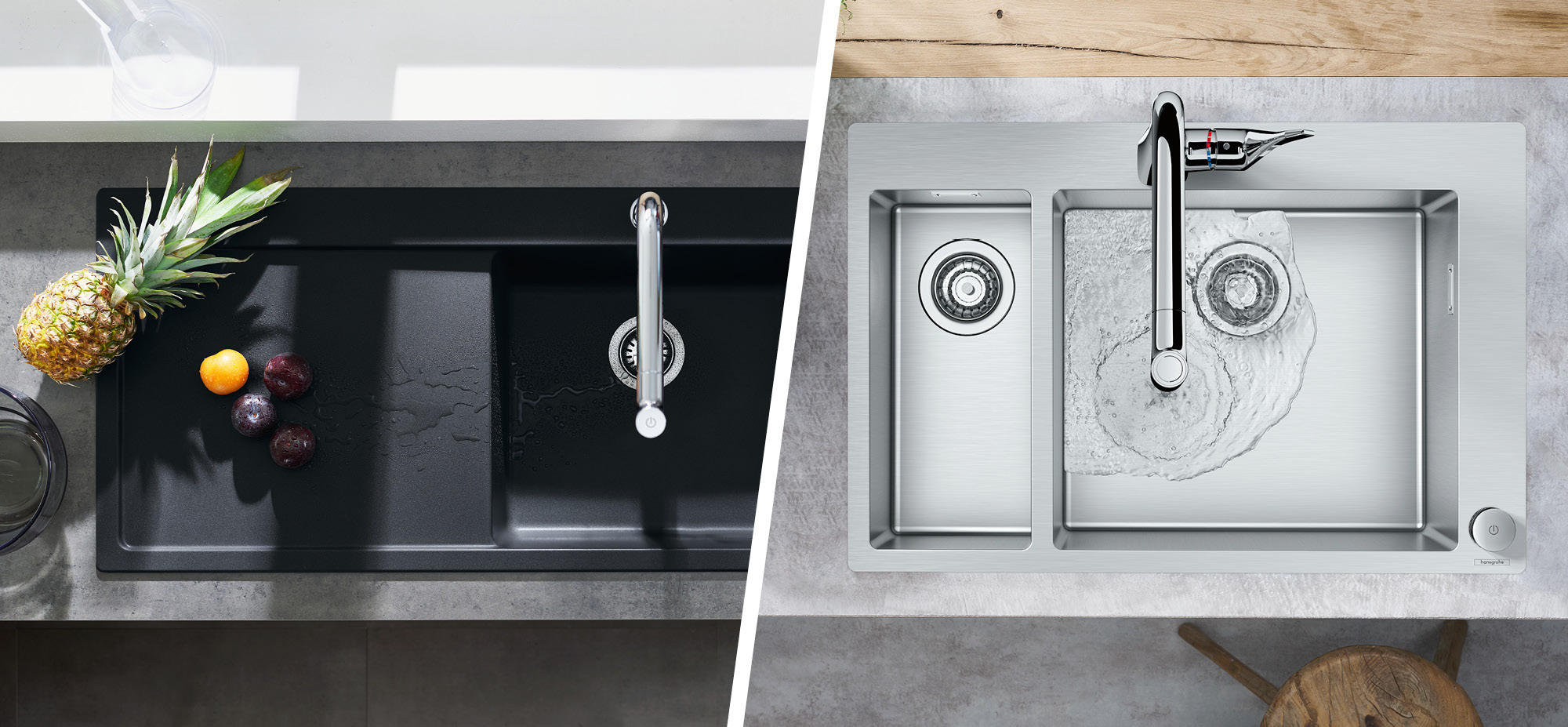 When it comes to choosing a kitchen sink, durability and longevity are important factors to consider. Ceramic sinks are known for their strength and durability, making them a popular choice for many homeowners. Unlike stainless steel sinks, ceramic sinks are less likely to get scratched or dented, and they can withstand high temperatures without getting damaged. This makes them a great option for busy kitchens where heavy pots and pans are constantly being used.
When it comes to choosing a kitchen sink, durability and longevity are important factors to consider. Ceramic sinks are known for their strength and durability, making them a popular choice for many homeowners. Unlike stainless steel sinks, ceramic sinks are less likely to get scratched or dented, and they can withstand high temperatures without getting damaged. This makes them a great option for busy kitchens where heavy pots and pans are constantly being used.
Easy to Clean and Maintain
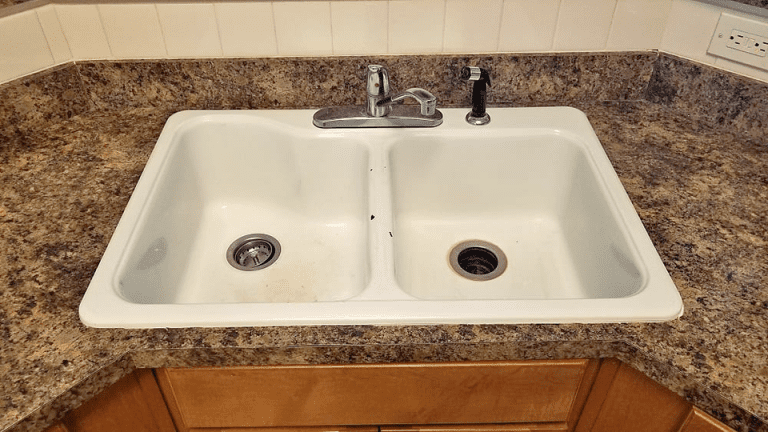 Keeping your kitchen sink clean is essential for good hygiene, and ceramic sinks make this task a breeze. They have a non-porous surface, which means that they are less likely to stain, and any spills or food residue can easily be wiped away. Additionally, ceramic sinks do not require any special cleaning products and can be cleaned with just soap and water. This not only saves you time and effort but also makes them a more cost-effective option in the long run.
Keeping your kitchen sink clean is essential for good hygiene, and ceramic sinks make this task a breeze. They have a non-porous surface, which means that they are less likely to stain, and any spills or food residue can easily be wiped away. Additionally, ceramic sinks do not require any special cleaning products and can be cleaned with just soap and water. This not only saves you time and effort but also makes them a more cost-effective option in the long run.
Wide Range of Styles and Colors
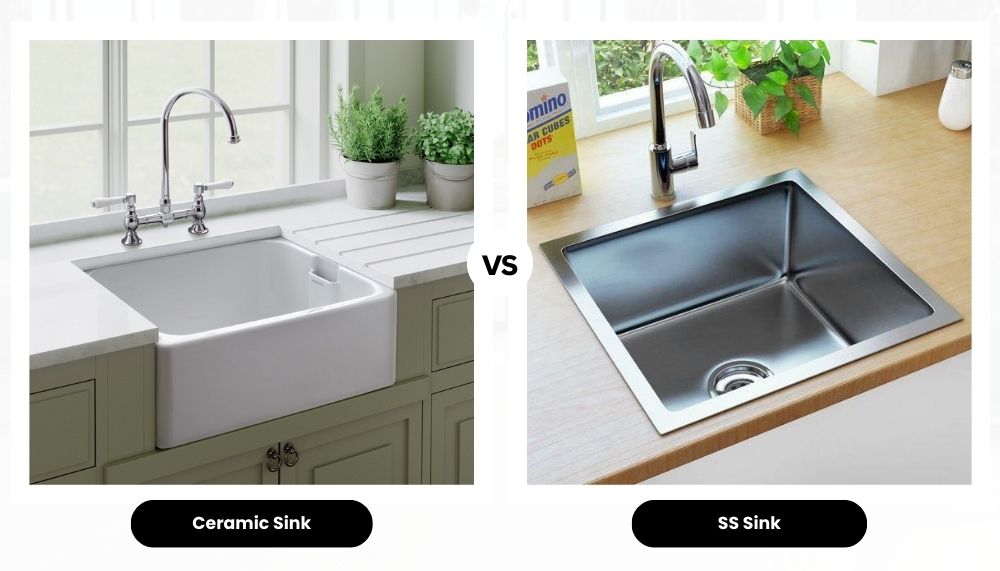 Another advantage of ceramic sinks is their versatility in terms of design. They come in a wide range of styles, shapes, and colors, making it easier for homeowners to find one that fits their kitchen design. Whether you have a traditional or modern kitchen, there is a ceramic sink that will complement the overall aesthetic. You can also choose from different finishes, such as glossy or matte, to add a touch of personalization to your kitchen.
Another advantage of ceramic sinks is their versatility in terms of design. They come in a wide range of styles, shapes, and colors, making it easier for homeowners to find one that fits their kitchen design. Whether you have a traditional or modern kitchen, there is a ceramic sink that will complement the overall aesthetic. You can also choose from different finishes, such as glossy or matte, to add a touch of personalization to your kitchen.
Environmentally Friendly
 In today's world, where sustainability is becoming increasingly important, ceramic sinks stand out as an environmentally friendly choice. They are made from natural materials, such as clay and minerals, and are fired at high temperatures, making them a more eco-friendly option compared to stainless steel sinks. Additionally, ceramic sinks are recyclable, which means that they can be repurposed into new products once they have reached the end of their lifespan.
In conclusion,
while stainless steel sinks may have their benefits, ceramic sinks offer a unique combination of durability, easy maintenance, versatility, and sustainability, making them the ideal choice for your kitchen sink. Consider these factors when choosing your next kitchen sink and enjoy the many benefits that ceramic sinks have to offer.
In today's world, where sustainability is becoming increasingly important, ceramic sinks stand out as an environmentally friendly choice. They are made from natural materials, such as clay and minerals, and are fired at high temperatures, making them a more eco-friendly option compared to stainless steel sinks. Additionally, ceramic sinks are recyclable, which means that they can be repurposed into new products once they have reached the end of their lifespan.
In conclusion,
while stainless steel sinks may have their benefits, ceramic sinks offer a unique combination of durability, easy maintenance, versatility, and sustainability, making them the ideal choice for your kitchen sink. Consider these factors when choosing your next kitchen sink and enjoy the many benefits that ceramic sinks have to offer.





